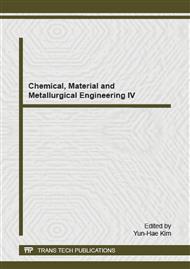p.238
p.245
p.249
p.253
p.261
p.265
p.269
p.273
p.278
Research on Ultrasonic-Rebound-Strength Curve of Polypropylene Fiber Concrete in Chloride Environment
Abstract:
Exploring strength curve and the corrosion mechanism of polypropylene fiber reinforced cement in chloride environment by the ultrasonic-rebound method and wet-dry cycle method in the laboratory. And fitting actual strength with rebound value and ultrasonic velocity, the result indicates that compressive strength of polypropylene fiber reinforced cement has a good regression relationship with rebound value and supersonic velocity
Info:
Periodical:
Pages:
261-264
Citation:
Online since:
March 2015
Authors:
Price:
Сopyright:
© 2015 Trans Tech Publications Ltd. All Rights Reserved
Share:
Citation:


